Lincoln Navigator: Body Repairs - Vehicle Specific Information and Tolerance Checks / Body and Frame. Description and Operation
Body
The body consists of the following:
- Aluminum and aluminum alloys
- Steel hood hinges
- Body cab structure constructed of aluminum
- Bolted, removable front fenders, hinged doors and hood constructed of aluminum
- Bonded and riveted aluminum body panels
- Mastic pads used on floor pan for sound deadening
- Standard and extended wheelbase models
- High-strength steel frame
Body Dimensions
Under Hood Dimensions
NOTE: All measurements are on center unless otherwise indicated.
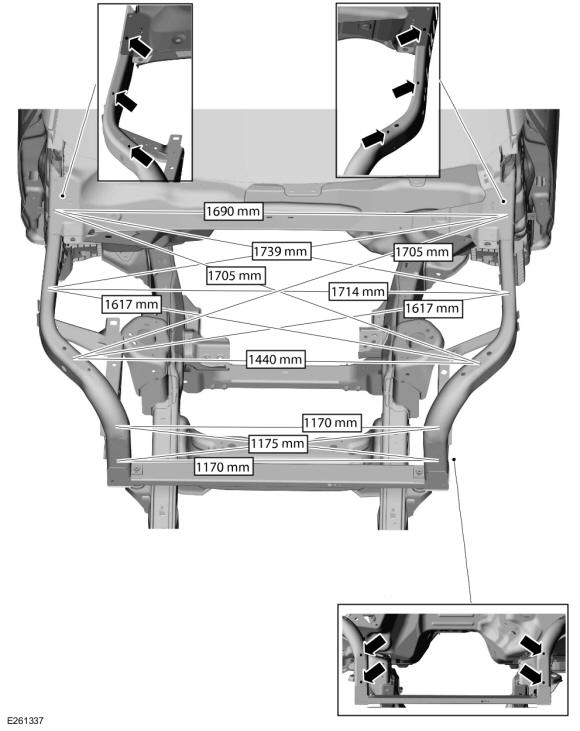
Front Door Opening Dimensions
NOTE: All measurements are on center unless otherwise indicated.
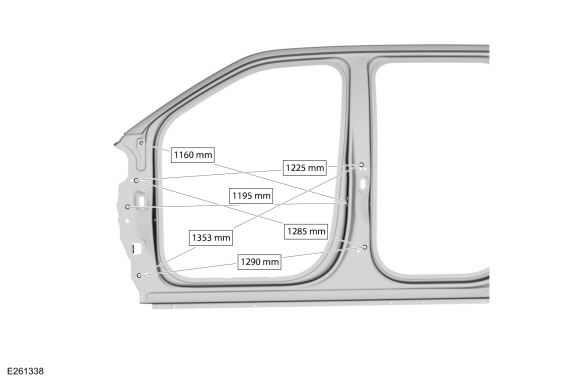
Rear Door Opening Dimensions
NOTE: All measurements on center unless otherwise indicated.
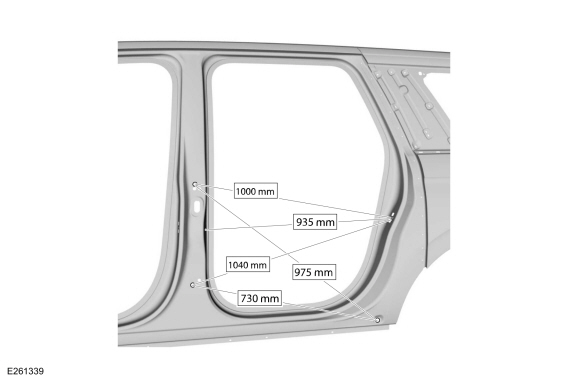
Liftgate Opening Dimensions
NOTE: All measurements are on center unless otherwise indicated.
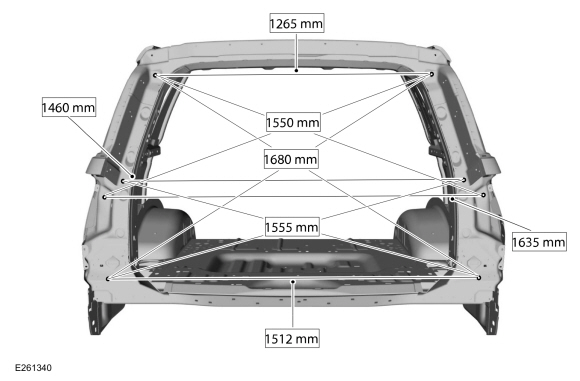
Under Body Measurements
Standard Wheelbase
NOTE: All measurements are on center unless otherwise indicated.
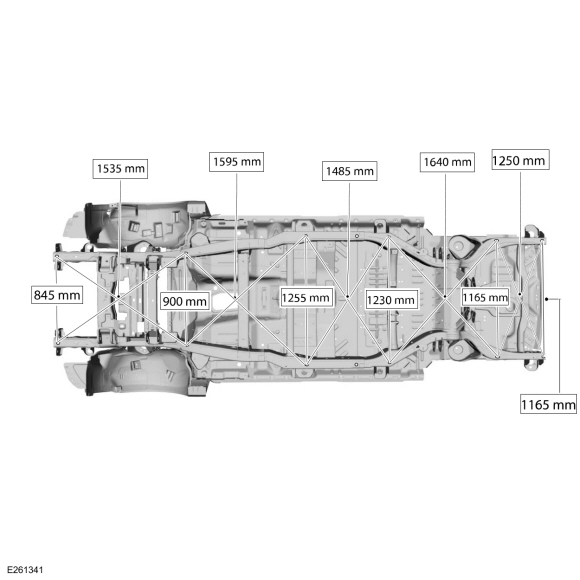
Extended Wheelbase
NOTE: All measurements are on center unless otherwise indicated.
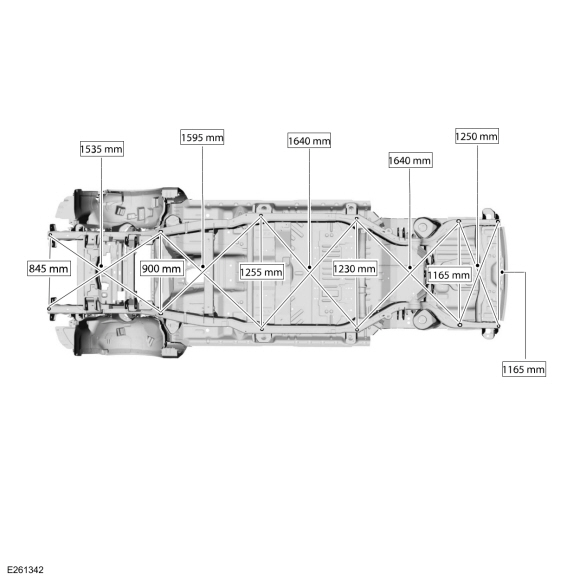
Standard Wheelbase Datum Height
NOTE: All measurements are on center unless otherwise indicated.
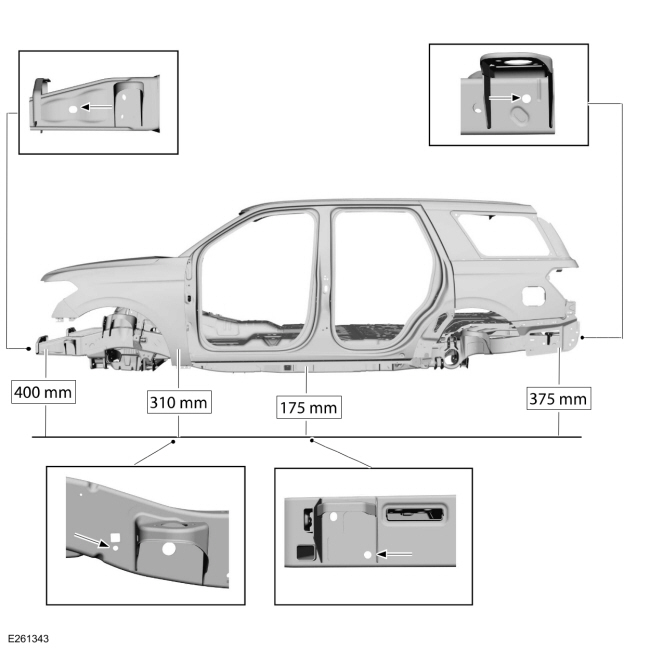
Extended Wheelbase Datum Height
NOTE: All measurements are on center unless otherwise indicated.

 Body Panel Sectioning. General Procedures
Body Panel Sectioning. General Procedures
Special Tool(s) /
General Equipment
Self-Piercing Rivet (SPR) Remover/Installer
Belt Sander
Blind Rivet Gun
Air Body Saw
MIG/MAG Welding Equipment
Materials
Name
Specification
Seam SealerTA-2-B, 3M™ 08308, LORD Fusor® 803DTM
-
Repair
NOTICE:
Do not begin removal of the vehicle body side until the replaceme..
Other information:
Lincoln Navigator 2018-2025 Workshop Manual: Engine Ignition. Diagnosis and Testing
Diagnostic Trouble Code (DTC) Chart Diagnostics in this manual assume a certain skill level and knowledge of Ford-specific diagnostic practices. REFER to: Diagnostic Methods (100-00 General Information, Description and Operation). Module DTC Description Action PCM P0300:00 Random Misfire Detected: No Sub Type Information GO to Pinpoint Test HD PCM P0301:0..
Lincoln Navigator 2018-2025 Workshop Manual: Drilling Precautions. General Procedures
Activation If a hole must be drilled in the frame the following requirements must be followed: The hole is at least the specified distance from the edge of the nearest hole. The edge of the drilled hole is at least the specified distance from the edge of the flange. The hole is at least the specified distance above the frame centerline. ..
Categories
- Manuals Home
- 4th Gen Lincoln Navigator Service Manual (2018 - 2025)
- Front Bumper Cover. Removal and Installation
- Front Bumper. Removal and Installation
- Remote Function Actuator (RFA) Module. Removal and Installation
- All Terrain Control Module (ATCM). Removal and Installation
- Transmission Fluid Level Check. General Procedures
Rear Stabilizer Bar Link. Removal and Installation
Removal
NOTE: Removal steps in this procedure may contain installation details.
With the vehicle in NEUTRAL, position it on a hoist.Refer to: Jacking and Lifting (100-02 Jacking and Lifting, Description and Operation).
NOTE: Use the hex-holding feature to prevent the stud from turning while removing the nut.
Remove and discard the 2 rear stabilizer bar link nuts and remove the rear stabilizer bar link.Torque: 46 lb.ft (63 Nm)


